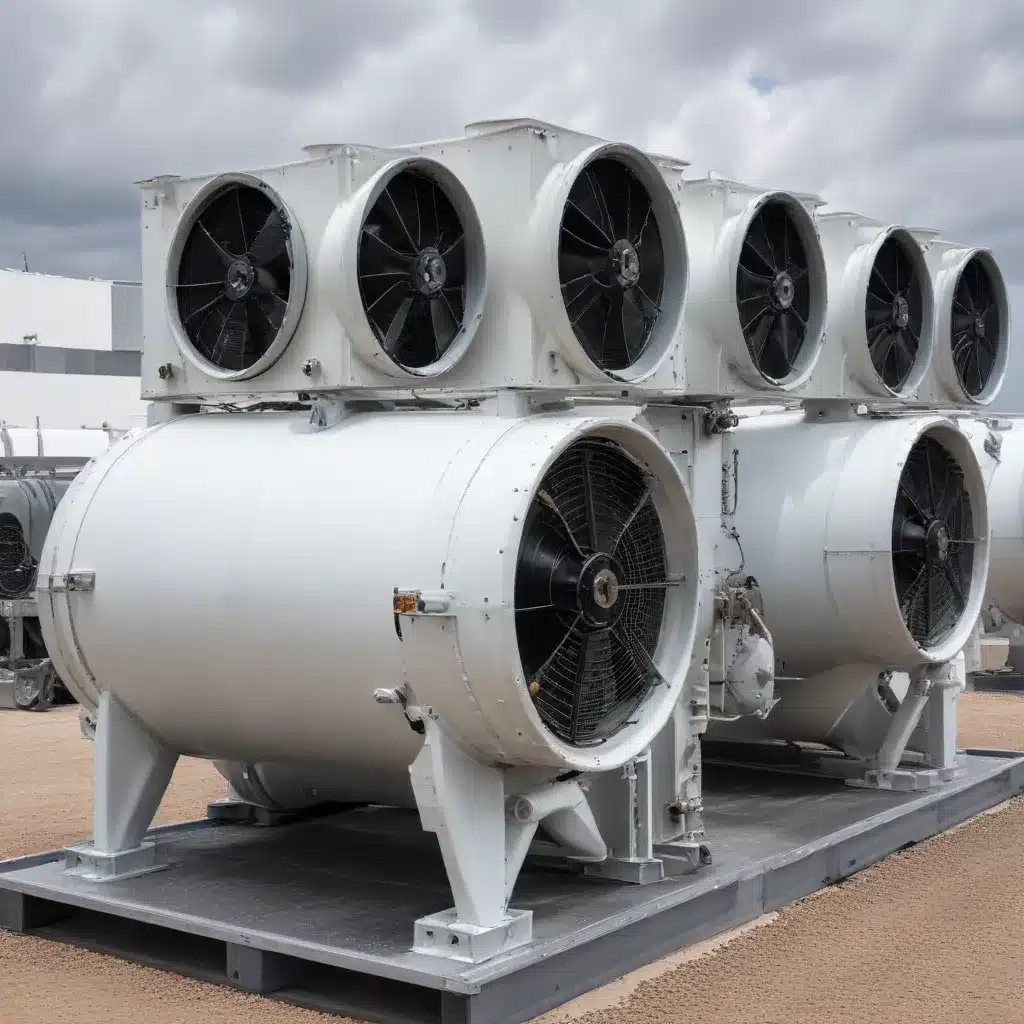
Mastering the Elements: Strategies for Optimizing Air-Cooled Heat Exchanger Performance
Extreme weather events and climate change pose significant challenges for the reliable operation of air-cooled heat exchangers across various industries. As global temperatures rise and weather patterns become increasingly unpredictable, engineers and facility managers must adapt their strategies to ensure these critical heat transfer systems continue to function efficiently and effectively, even in the face of the harshest environmental conditions.
Thriving in the Heat: Designing for Extreme Temperatures
One of the primary concerns with air-cooled heat exchangers is their performance in high ambient temperatures. As the surrounding air grows hotter, the capacity of the heat exchanger to dissipate heat decreases. This can lead to reduced cooling efficiency, increased power consumption, and even equipment failure if not properly addressed.
To combat this issue, modern air-cooled heat exchanger designs incorporate several innovative features. Variable-speed fan drives, for example, allow the fans to adjust their speed based on the ambient conditions, maintaining optimal airflow and heat transfer even as temperatures climb. Augmented fin surfaces with enhanced geometries can also improve heat dissipation, while coatings and materials engineered to withstand high temperatures help protect critical components.
Careful consideration of the local climate and anticipated future conditions is essential when selecting and sizing air-cooled heat exchangers for new installations. Conducting thorough thermal performance modeling can help engineers identify the most appropriate design parameters, ensuring the system is equipped to handle the predicted thermal loads, even during extreme heat waves.
Braving the Cold: Addressing the Challenges of Freezing Temperatures
Extreme cold can pose a different set of challenges for air-cooled heat exchangers. As ambient temperatures drop, the potential for frost and ice buildup on the heat exchanger coils increases, impeding airflow and reducing heat transfer efficiency.
To mitigate these issues, modern air-cooled heat exchangers employ a variety of strategies. Intelligent control systems can monitor weather forecasts and automatically initiate defrost cycles to melt accumulated ice, ensuring uninterrupted operation. Heated surfaces and wind barriers can also help prevent frost formation, while low-temperature fan motors and specialized coatings ensure critical components can withstand the cold.
For applications in regions with prolonged periods of subfreezing temperatures, hybrid systems that combine air-cooled and evaporative cooling technologies can provide a robust solution. The evaporative cooling component helps maintain high heat transfer rates even when the air-cooled section is impaired by icy conditions.
Weathering the Storm: Protecting Against Extreme Weather Events
In addition to temperature extremes, air-cooled heat exchangers must also contend with the threats posed by severe weather events, such as hurricanes, floods, and wildfires.
Robust structural designs with reinforced casings and anchoring systems can help air-cooled heat exchangers withstand the high winds and flying debris associated with hurricanes and other intense storms. For facilities located in flood-prone areas, elevated installations or waterproofing measures can safeguard the equipment against rising water levels.
When it comes to wildfires, fire-resistant materials and ember-resistant screens can help prevent ignition and damage to the heat exchanger components. Careful siting of the equipment, away from heavily wooded areas or other fire-prone vegetation, is also crucial.
Maintaining Peak Performance: Proactive Maintenance Strategies
Regardless of the climate or weather challenges, a well-designed air-cooled heat exchanger system requires diligent maintenance to ensure optimal performance and longevity. Regular inspection and cleaning of the heat exchanger coils, fans, and other components can help mitigate the effects of fouling, corrosion, and wear.
Developing a preventive maintenance program tailored to the specific operating conditions and environmental factors faced by the facility is essential. This can include scheduled filter replacements, fan bearing lubrication, and coil cleaning to maintain heat transfer efficiency.
In addition, continuous monitoring of key performance indicators, such as pressure drops, air velocities, and vibration levels, can help identify potential issues before they escalate. Prompt troubleshooting and remediation of any problems detected can help minimize downtime and maximize the reliability of the air-cooled heat exchanger system.
Leveraging Emerging Technologies for Enhanced Resilience
As the challenges posed by extreme weather and climate conditions continue to evolve, the air-cooled heat exchanger industry is responding with a range of innovative solutions. Advanced materials, predictive analytics, and smart automation are just a few of the emerging technologies that can help improve the resilience and adaptability of these critical heat transfer systems.
Composite materials, for instance, can provide enhanced corrosion resistance and structural integrity, while self-healing coatings can automatically repair minor damage. Predictive maintenance algorithms, leveraging machine learning and Internet of Things (IoT) sensors, can help anticipate and prevent equipment failures before they occur.
Furthermore, integrated control systems with weather monitoring capabilities can automatically adjust operating parameters, initiate defrost cycles, or activate backup cooling modes in response to changing environmental conditions. These advancements can help air-cooled heat exchanger operators maintain reliable, energy-efficient performance, even in the face of the most challenging weather and climate scenarios.
Collaborating for a Climate-Resilient Future
Addressing the challenges of air-cooled heat exchanger operation in extreme weather and climate conditions requires a multifaceted approach, involving close collaboration between equipment manufacturers, facility managers, and industry experts.
Manufacturers must continue to push the boundaries of design and engineering, integrating cutting-edge technologies and materials to create increasingly resilient and adaptable air-cooled heat exchanger solutions. Facility managers, in turn, must stay informed of the latest industry developments and work closely with their equipment providers to ensure their systems are properly specified, installed, and maintained for the unique environmental conditions of their location.
By fostering this partnership and sharing knowledge, the air-cooled heat exchanger industry can collectively develop the strategies and tools necessary to keep critical industrial processes running smoothly, even as the global climate continues to evolve. Through this collaborative effort, we can build a more resilient and sustainable future, where air-cooled heat exchangers remain a reliable and efficient solution for a wide range of applications, no matter the weather or climate challenges they may face.
Visit https://www.aircooledheatexchangers.net/ to explore more resources and connect with industry experts dedicated to addressing the challenges of air-cooled heat exchanger operation in extreme weather and climate conditions.

